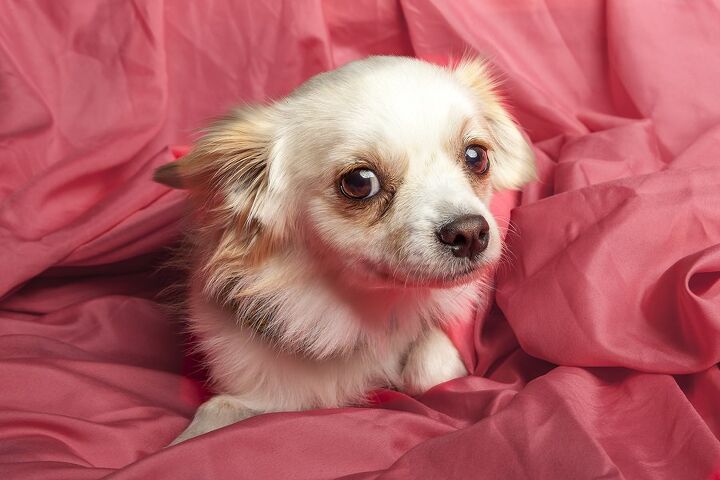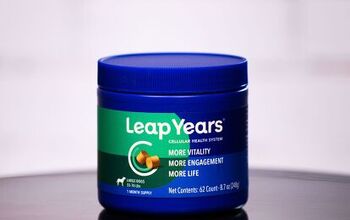Chimo


About Chimo
The Chimo is considered a first-generation breed which means he is a cross between a pure American Eskimo Dog and a pure Chihuahua, versus the offspring of two Chimos. This sturdy little companion dog has loads of energy, is highly devoted to his family and brings together the best traits of his two popular parent breeds. His protective nature makes him a rather vocal watchdog that may not necessarily be an ideal choice for apartment dwellers.
The Chimo is a mix of American Eskimo Dog and Chihuahua.
The sturdy Chimo is a companion dog that has loads of energy, and is highly devoted to his family.
The compact, playful nature of the Chimo is gaining in popularity as smaller, designer breeds make dog ownership more attainable for those without large yards or living spaces. While Chimos are a relatively new addition to the designer roster, this dog comes from two of the oldest breeds around; Chihuahuas are considered the smallest dog in the world and date back to Pre-Columbian Mexico while the American Eskimo Dog can be traced back 6,000 years to Scandinavian countries where the breed most certainly holds Spitz ancestry.
Because the Chimo is a designer dog he isn’t permitted to join the American Kennel Club (AKC). His parents however are both long-time members; the American Eskimo Dog joined AKCs non-sporting group in 1994 and is described as smart, perky and an excellent trick dog. The Chihuahua became an AKC member back in 1904 under the toy group category and is considered charming, graceful and sassy.
Your Chimo is a small breed dog and as such will burn calories much faster than a large dog. Feeding should be frequent small meals of a premium kibble throughout the day with snacks and treats provided sparingly to ensure the bulk of his nutrients are coming from quality sources. Chihuahuas have a very low tolerance for preservatives and artificial coloring, so you may want to consult with your vet when choosing the best pet food.
The Chimo comes from two intelligent but rather wilful breeds that both have an independent streak, so training will require patience and may be a challenge for first-time owners. The danger of not properly socializing this pet is that he may develop small dog syndrome, where he feels he leads the pack and can snap at those who annoy him. Training him early on and in a consistent, rewards-based manner can avoid this challenging personality trait. For those who struggle with the process, obedience classes would be a wise investment.
Your Chimo will weigh between 6 and 10 pounds if his mix includes American Eskimo Dog (miniature). If the Chihuahua has been bred with a standard- or toy-sized version of this breed he will weigh slightly more or less.
The Chimo is an ideal family dog and is described as affectionate, independent, intelligent and playful. In spite of his smaller stature, he loves kids and active play and can become bored and destructive if not given the physical and mental stimulation he needs. He is also highly protective of his human pack and while not aggressive, can step in to become vocal with strangers – a trait which can be curbed through early training.
Designer dogs are typically free from the health issues that can plague their pure-bred parents however prospective pet owners need to do their homework to understand what ailments might be inherited. In the case of the Chihuahua, patella luxation can pose a problem as well as GME (Granulomatous Memingoencephalitis) which impacts the central nervous system of certain variations on this breed. For American Eskimo Dogs, cataracts and progressive retinal atrophy can be an issue.
In the world of dogs, the Chimo has a good long life expectancy of 14-15 years
Don’t be fooled by their small size. The Chimo is a mighty mini who not only loves to play and go for walks, but needs this type of activity in order to stay mentally stimulated and out of trouble. Plan to devote time throughout your day to a few short outings and a tossed ball in the yard or family room. Because American Eskimo Dogs are also known for their agility and love of playing catch or fly ball, a visit to the local dog park and a tossed Frisbee would be a great way to burn off some energy.
In spite of his smaller stature, the Chimo loves kids and active play.
Also known as the Eskimo Chi, the Chimo is recognized by the Designer Breed Registry (DBR), the American Canine Hybrid Club (ACHC), the Designer Dogs Kennel Club (DDKC), the Dog Registry of America, Inc. (DRA) and the International Designer Canine Registry (IDCR).
Chimos often pick up the thick, double-coat of the American Eskimo Dog and in spite of seasonal shedding they are surprisingly easy to maintain. Because his coat carries natural oils that help prevent soiling, you will find that regular brushing is sufficient to keep him looking his best with bathing only on an as-needed basis. Contributing to the fluffy factor will be whether the Chihuahua parent was a long- or short-coated variety.
Chimo pups will be very small and can be susceptible to fractures and accidents during their puppy years. Extra care should be taken to protect them from the hazards that can come from young children, improper handling or over-exertion during training or exercise. Their tiny size also means that proper nutrition is particularly crucial to their development, so if you are unfamiliar with this breed as a young puppy, speak to your vet.
Photo credit: Dan Kosmayer/Bigstock; gjohnstonphoto/Bigstock; graphicphoto/Bigstock

Sharing space with three seriously judgy Schnoodles and a feline who prefers to be left alone. #LivingMyBestLife
More by Mary Simpson

























